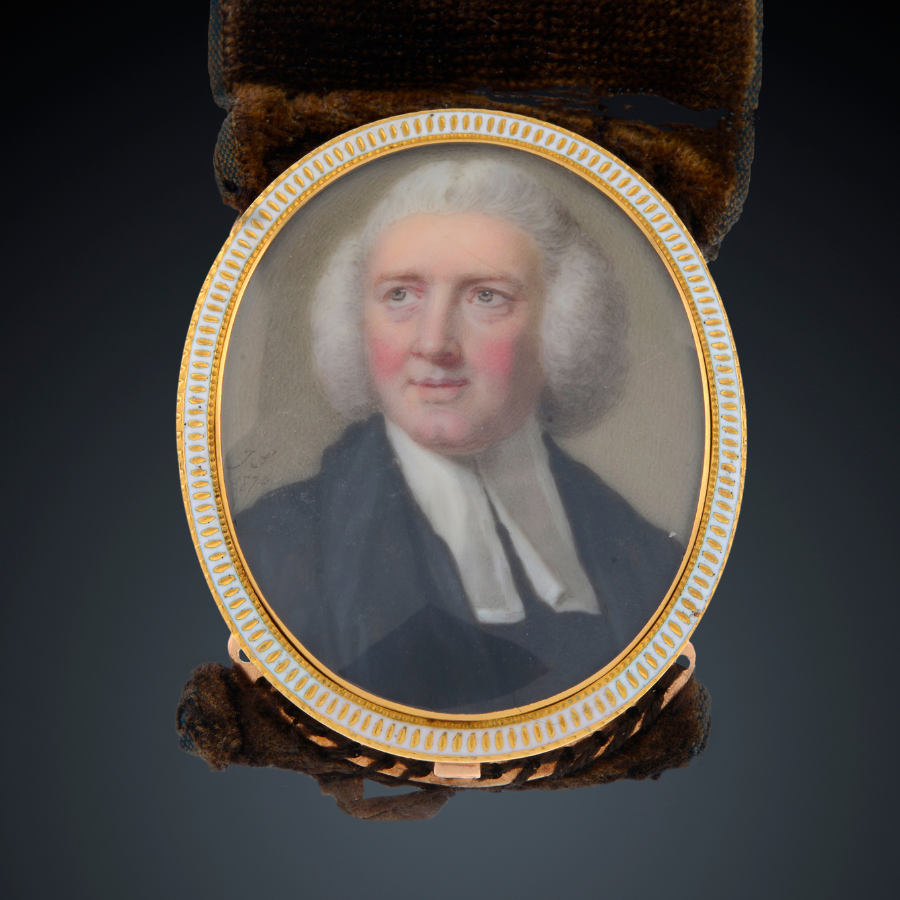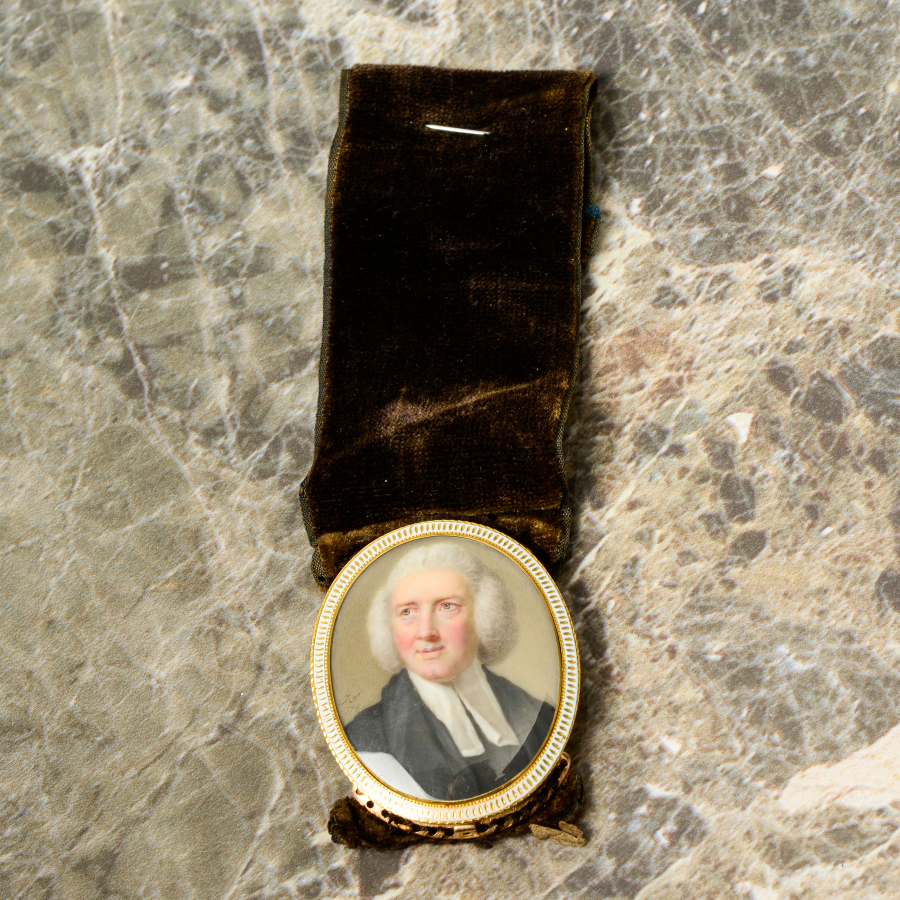As the advent of photography was 70 years off, affluent Georgians in the latter half of the eighteenth century often used portraiture to record their status. People would also give them as tokens of their affection for loved ones both in their lifetime and as gifts upon their death. For people living in this period, being painted by John Smart would have been a very impressive symbol of their status. A modern comparable for us would be commissioning a portrait photographer such as David Bailey or Hugo Burnand.
Who Was John Smart?
Born in 1741, in Norfolk, John Smart was one of, if not, the leading (and most accomplished) miniature portrait painter of Georgian society. His talent was prevalent from an early age. In 1755, aged 14 he was runner-up to Richard Cosway in a drawing competition for under 14s held by the Society for the Encouragement of Arts, Manufactures and Commerce. Later in the same year, he began attending the new drawing school of William Shipley in London, along with Cosway and Richard Crosse. However, by 1760 he had established a successful career as a miniature painter.
In 1762, aged 21, he joined and exhibited at the Society of Artists in London, later becoming president in 1778. It is believed he travelled to India in 1785. Here he obtained several high-profile commissions of the nawab of Arcot, East India Company personnel, government officials, and prosperous members of Indian society. Following this, he moved back to the UK in 1797, settling in London and died in 1811.
His Style
Smart was renowned for his use of quiet colour and subtlety. A skilled draughtsman, he often used detailed drawings as a basis for his miniatures. He is known to have sketched in graphite and watercolour onto paper or vellum. He often created numerous studies before completing his final portrait. Then, painting onto ivory, his flesh tints, detail in fabric and anatomical accuracy made him world-renowned. His works were often initialled and dated, but his attention to detail was usually his greatest signature even on the smallest of sizes.

The Sitter
On the back, we can see an inscription for Erasmus Saunders D.D. Born in 1712, he was a well-educated man. He graduated from Merton College, Oxford with a BA in 1737, an MA in 1740, a BD in 1751 and a DD in 1753. Saunders became the vicar of Wantage in 1755 and, in 1756, the Prebendary of Rochester Cathedral and the vicar of St Martin in the Fields. From 1751 to 1756, he served as the Canon of Windsor and was appointed to the tenth stall in St George’s Chapel, Windsor. He died in 1775, with his final resting place in the south aisle of Bath Abbey. Given the inscription of JS and the date of 1776 with it, we would think Smith painted it after his death. As the date 1750 is on the reverse, we believe it likely depicts a younger Saunders.
John Smart at Auction
Fine Jewellery | Wednesday 31st July 2024
Viewing times (ID required):
London
Tuesday 23rd July 12:00 – 19:00
Wednesday 24th July 10:00 – 16:00
Birmingham
Monday 29th July 10:00 – 16:00
Tuesday 30th July 10:00 – 16:00
Wednesday 31st July 8:30 – 10:00
Virtual viewings are available by request. Virtual viewings are the ultimate personal shopping experience. Using Zoom, you can ask us whatever you need to know to buy with confidence. Find out more here.
Alison Snowdon BA (Hons) | General Valuer














